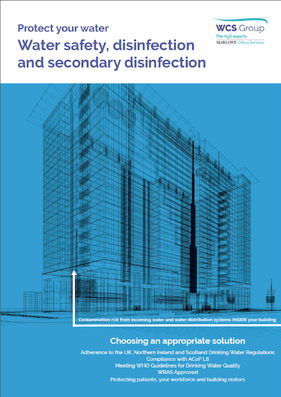 Cleanzine: your weekly cleaning and hygiene industry newsletter 3rd July 2025 Issue no. 1169
Cleanzine: your weekly cleaning and hygiene industry newsletter 3rd July 2025 Issue no. 1169
Your industry news - first
The original and best - for over 20 years!
We strongly recommend viewing Cleanzine full size in your web browser. Click our masthead above to visit our website version.
New guide to water system disinfection: Protecting the sectors where clean water matters
 The WCS Group has launched a new guide to water-based disinfection control, highlighting the different methods of preventing bacterial proliferation and their pros and cons; ideal for facilities managers, building services and health & safety professionals responsible for safe water used in processes, as part of HVAC systems, process and potable water.
The WCS Group has launched a new guide to water-based disinfection control, highlighting the different methods of preventing bacterial proliferation and their pros and cons; ideal for facilities managers, building services and health & safety professionals responsible for safe water used in processes, as part of HVAC systems, process and potable water.
Suitable for a range of sectors where clean water matters, the guide covers options for healthcare, food & beverage, leisure and hospitality, manufacturing and more.
'Protect your water - water safety, disinfection and secondary disinfection', is free to download from safe drinking process water and includes information on both primary and secondary disinfection.
Every industry has its own set of challenges and priorities when it comes to water hygiene, and WCS's guide aims to address each method's characteristics, comparing commonly used options based on a range of parameters - from the effectiveness of the disinfection, to safety considerations and environmental impact.
Chris Abraham, critical services marketing director for the WCS Group explains: "Where humans are in contact with water, their safety is of course the main priority, but in applications where a system is closed, for example, this concern can come lower down the list.
"Our guide acts as a handy reference document, which with the support of water treatment experts will help responsible parties make informed decisions about the type of disinfection control required for their particular application."
Disinfection methods covered:
* Chlorination (Liquid)
* Electrolytic Chlorine Generation
* Chlorine Dioxide Generation
* Ozonation
* Ultraviolet Light (UV)
* Ultralox - a highly effective low concentration form of chlorine
* Considerations covered:
* Advantages & limitations
* Processes
* Equipment
* Chemical make-up and quantity
* Suitable applications
5th September 2019







